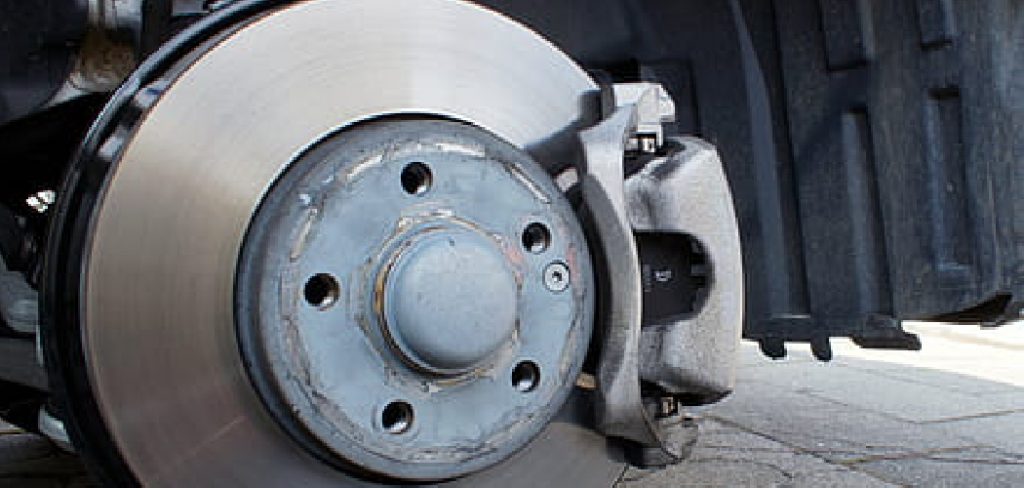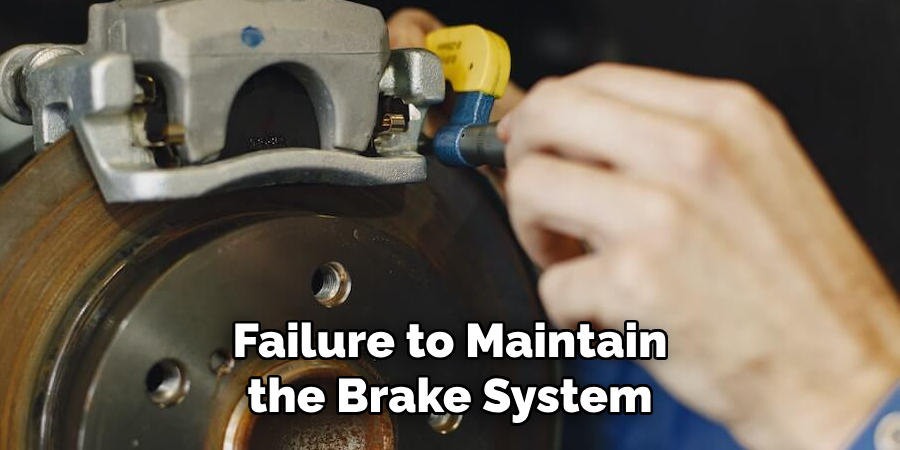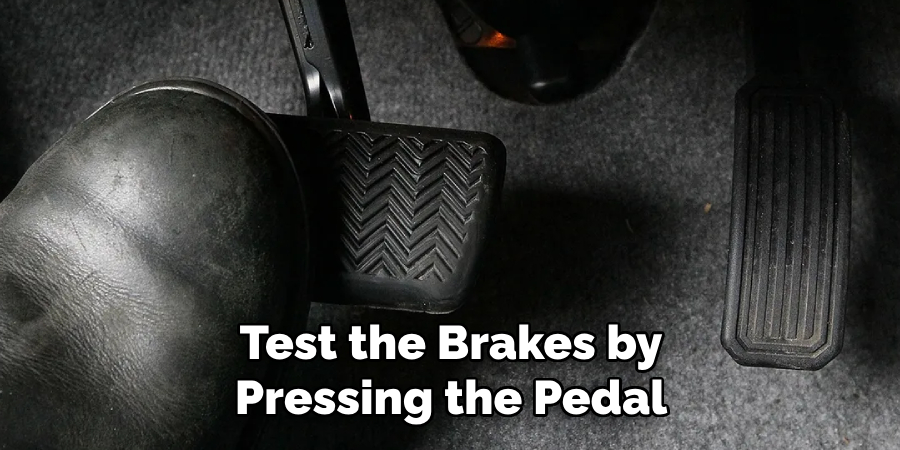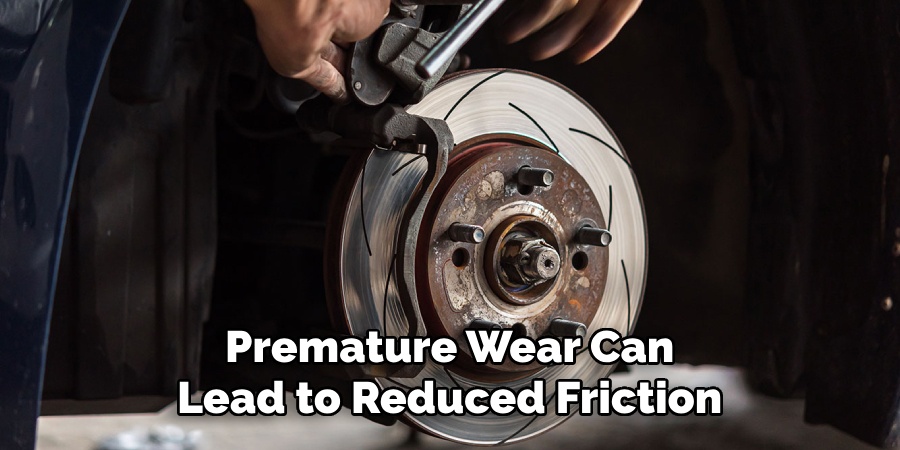Understanding the importance of your vehicle’s brake system is critical to safe driving and the longevity of your car. Your brake pads are a crucial part of this system, and knowing how to recognize and repair wear on them can save you a lot of time and money while ensuring your safety on the road.

We’ll walk through the detailed steps for how to repair wear out brake pads prematurely and discuss preventive measures to safeguard against future issues.
The Critical Role of Brake Pads
Your car’s brake pads play an essential role in its ability to stop safely and efficiently. With every press of the brake pedal, the pads clamp down on the rotors, creating friction that slows down and stops the wheels from turning.
Timely inspection and maintenance of the brake pads are essential, as issues with this part can lead to unsafe driving conditions and costly repairs.
Common Causes of Early Brake Pad Wear
Understanding the common causes of brake pad deterioration can help you avoid future problems. The following are common culprits:
Aggressive Driving Habits
Consistently slamming on the brakes or riding them can cause your brake pads to wear much faster than normal.
Improper Installation
If the brake pads are not installed correctly, they can wear unevenly, leading to premature damage.
Low-Quality Brake Pads
Subpar-quality brake pads are often made of inferior materials that break down faster under normal usage.
Neglected Maintenance
Failure to maintain the brake system, including lubricating the calipers, can accelerate the wearing process.

Identifying Worn-Out Brake Pads
Knowing the signs of worn brake pads is key. You might hear a high-pitched squeaking noise when you apply the brakes, which results from a small metal shim, called an indicator, hitting the brake disc to warn you. Or, a grinding sound could indicate that the pads are completely worn and metal-to-metal contact is taking place.
Visual Inspection
You can also inspect the brake pads visually. By removing the wheel and looking at the pads, you should see the thickness compared to the manufacturer’s recommendations.
Squeaking or Grinding Noise
As mentioned, odd sounds can be tell-tale signs of worn-out brake pads. Squeaking occurs when pads wear to roughly 30% of their original thickness, while a grinding noise indicates extreme wear.
Reduced Braking Performance
A softer pedal feel, increased stopping distance, or a vibrating steering wheel when braking can all indicate brake pad wear.
How to Repair Wear out Brake Pads Prematurely: Step-by-Step Guide
Here are the steps you should take to replace worn brake pads:
Step 1: Gather the Necessary Tools and Materials

You will need a car jack, lug wrench, a C-clamp, new brake pads, and possibly a tube of brake lubricant. It’s also helpful to have a service manual for your vehicle.
Step 2: Remove the Wheel and Caliper
Use the car jack to lift the vehicle and secure it on jack stands. Then, use a lug wrench to remove the wheel. Next, unbolt the caliper and hang it using a wire or bungee cord to prevent damage to the brake line.
Step 3: Inspect and Measure the Brake Pad Thickness
Before removing the old pads, inspect them for uneven wear and check the thickness with a ruler or caliper. If they are thinner than 1/4 inch, they need to be replaced.
Step 4: Replace the Brake Pads
Remove the old pads and compress the caliper piston using the C-clamp. Then, install the new pads, ensuring they are seated properly in the caliper bracket.
Step 5: Reinstall the Caliper and Wheel
Screw the caliper back into place, and then put the wheel back on and tighten the lug nuts.
Step 6: Test the Brakes

Lower the car off the jack and test the brakes by pressing the pedal a few times to ensure they work properly.
Preventive Measures for Future Brake Pad Wear
To prevent premature brake pad wear, be mindful of your driving habits. Avoid heavy braking and always come to a complete stop rather than ‘riding’ the brakes. Also, ensure all brake parts are lubricated and moving correctly during regular maintenance checks.
Regular Inspection and Maintenance
Perform a routine inspection of the brakes and replace pads when they show significant wear.
Proper Driving Techniques
Drive defensively and anticipate stops to ease onto the brake pedal rather than slamming on the brakes.
Using High-Quality Brake Pads
Investing in high-quality brake pads can save you money in the long run, as they often last longer.
5 Benefits of Repairing Worn-Out Brake Pads Prematurely
When it comes to preventive maintenance on your vehicle, few components are as critical as the brake pads. They’re the unsung heroes of road safety, tasked with bringing you to a secure stop at a moment’s notice.
But as vital as they are, brake pads can wear out surprisingly fast, and knowing when to replace them is crucial. Here are five compelling reasons why addressing worn-out brake pads sooner rather than later is prudent and beneficial on several fronts.
1. Improved Safety Metrics
Brake pads in good condition can make all the difference during a sudden stop or when navigating slippery road conditions. Premature wear can lead to reduced friction material, compromising stopping power.

It’s not an exaggeration to say that worn brake pads can mean the difference between a near-miss and a collision. By repairing them early, you ensure your vehicle’s most crucial safety system operates as it should—keeping you and your passengers safe on the road.
2. Substantial Cost Savings
It’s a common misconception that delaying brake pad replacement saves you money. On the contrary, worn brake pads can damage other crucial braking components, such as the rotors. When caught early, the cost of replacing just the pads is significantly lower than refurbishing or replacing the rotors entirely.
A dollar saved is earned, and addressing brake pads before they create a domino effect of damage can make your maintenance costs manageable.
3. Enhanced Fuel Efficiency
Your car’s brake system is directly related to its fuel efficiency. When you apply brakes, the work that slows the vehicle is converted into heat energy. The harder the brakes have to work to compensate for worn pads, the more fuel your vehicle consumes.
By maintaining fresh brake pads, you reduce the strain on your engine and improve overall fuel economy, which is good for your wallet and the environment.
4. Improved Vehicle Performance
Good brake pads mean better vehicle handling and response. If your brake pads are worn out, you might notice longer stopping distances and a ‘spongy’ feel in the brake pedal.
This can affect your ability to control your vehicle, especially in emergencies. By replacing pads early, you maintain the responsiveness of your brake system, ensuring a better driving experience and preserving the overall performance of your vehicle.
5. Prolonged Tire Life
Worn brakes don’t just impact the braking system; they can also wear out tires much faster. When your braking system isn’t functioning optimally, it can lead to uneven tire wear, especially bald spots in the tire treads.
Premature brake maintenance ensures your tires last longer, promoting better traction and handling. It’s an often overlooked but significant advantage to maintaining good brake health.
4 Common Mistakes People Make When Trying to Repair Worn Brake Pads
While replacing brake pads is a relatively simple task, people make several common mistakes when attempting to do it themselves. Avoiding these errors can save you time and money in the long run.
1. Using Incorrect Tools or Techniques
Using the wrong tools or techniques can damage your vehicle’s brake system, leading to costly repairs. Ensure you have the right tools, including a lug wrench and C-clamp, and follow proper techniques, such as lifting the vehicle correctly and using caution when compressing the caliper piston.
2. Installing Low-Quality Brake Pads
Saving money upfront by purchasing low-quality brake pads can cost you more in the long run. These pads often wear out faster and can cause damage to other brake components, leading to more frequent repairs. Invest in high-quality brake pads for safer, more reliable braking performance.
3. Not Lubricating Brake Parts
Lubrication is essential for the smooth operation of the brake system. Failing to lubricate key components, such as caliper pins and backing plates, can lead to premature wear and reduced braking efficiency. During brake pad replacement, take the time to lubricate these parts for optimal performance.
4. Waiting Too Long to Address Worn Brake Pads
Ignoring worn brake pads and waiting too long before addressing them puts you at risk on the road and leads to more significant repairs and higher costs down the line.
Don’t delay brake maintenance and replacement, as it can ripple effect on other vital components of your vehicle’s braking system. By promptly addressing worn brake pads, you ensure your safety and save yourself from unnecessary expenses.
Conclusion
Keeping your brake pads in top condition is pivotal for your vehicle’s safety and your peace of mind. Regular inspection and maintenance, along with safe driving practices, can extend the life of your brake pads and keep your car stopping as it should.
If you do experience signs of wear, following the replacement steps outlined here can be a cost-effective way to ensure your brake system keeps you safe on the road.
Remember, when it comes to your car’s brakes, procrastination is not an option—your life and the lives of others on the road depend on it. Thanks for reading our post about how to repair wear out brake pads prematurely.

Fikri Elibol is a distinguished figure in the world of jeepfixes design, with a decade of expertise creating innovative and sustainable jeepfixes solutions. His professional focus lies in merging traditional craftsmanship with modern manufacturing techniques, fostering designs that are both practical and environmentally conscious. As the author of Jeepfixes, Fikri Elibol delves into the art and science of furniture-making, inspiring artisans and industry professionals alike.
Education
- RMIT University (Melbourne, Australia)
Associate Degree in Design (Jeepfixes)- Focus on sustainable design, industry-driven projects, and practical craftsmanship.
- Gained hands-on experience with traditional and digital manufacturing tools, such as CAD and CNC software.
- Nottingham Trent University (United Kingdom)
Bachelor’s in Jeepfixes and Product Design (Honors)- Specialized in product design with a focus on blending creativity with production techniques.
- Participated in industry projects, working with companies like John Lewis and Vitsoe to gain real-world insights.
Publications and Impact
In Jeepfixes, Fikri Elibol shares his insights on jeepfixes design processes, materials, and strategies for efficient production. His writing bridges the gap between artisan knowledge and modern industry needs, making it a must-read for both budding designers and seasoned professionals.
